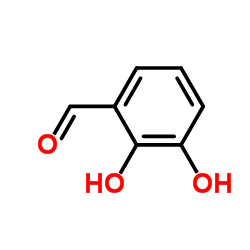QSARs for the effect of benzaldehydes on foodborne bacteria and the role of sulfhydryl groups as targets of their antibacterial activity.
M E Ramos-Nino, C A Ramirez-Rodriguez, M N Clifford, M R Adams
文献索引:J. Appl. Microbiol. 84(2) , 207-12, (1998)
全文:HTML全文
摘要
Quantitative structure activity relationships (QSARs) were obtained describing the activity of a series of benzaldehydes against three different foodborne bacteria, Listeria monocytogenes F6861, serotype 4b, Salmonella enteritidis, Phage type 4, P167807 and Lactobacillus plantarum INT.L11. MIC values at pH 6.2 and 35 degrees C were obtained for 11 phenolic benzaldehydes to produce multiple linear regression and artificial neural network models. For each organism, the models contained a steric parameter Vw and an electronic-steric parameter for ortho substituents Es degree. The benzaldehydes did not require to partition to produce their effect, shown by the lack of a lipophilic parameter in the models. This strongly suggests that they act on the outside of the cells. Substitution ortho to the carbonyl group increased their antibacterial action. Cells were treated with 2,3-dihydroxy benzaldehyde and examined for their ability to bind radiolabelled iodoacetate to envelope sulfhydryl groups that remained available. It was shown that the accumulation of radiolabelled iodoacetate was lower after treatment, indicating possible competition between these two compounds for the same target. The order of the sensitivity to benzaldehydes (Salmonella > Listeria > Lactobacillus) correlated with the number of surface sulfhydryl groups available, being highest for Salmonella.
相关化合物
| 结构式 | 名称/CAS号 | 分子式 | 全部文献 |
|---|---|---|---|
 |
2,3-二羟基苯甲醛
CAS:24677-78-9 |
C7H6O3 |
|
Self-activating nuclease activity of copper (II) complexes o...
2006-01-01 [J. Inorg. Biochem. 100(1) , 51-7, (2006)] |
|
Synthesis and biological activity of 4-amino-5-chloro-2-etho...
1996-08-01 [Chem. Pharm. Bull. 44(8) , 1484-92, (1996)] |
|
Inhibition of phosphatidylinositol kinase by toyocamycin.
1990-12-01 [J. Antibiot. 43 , 1586-1589, (1990)] |
|
Effective photocatalytic dechlorination of 2,4-dichloropheno...
2016-01-01 [Photochem. Photobiol. Sci. 15 , 86-98, (2016)] |
|
[Studies on chemical constituents from Elaeocarpus sylvestri...
2008-10-01 [Zhong Yao Cai 31(10) , 1503-5, (2008)] |